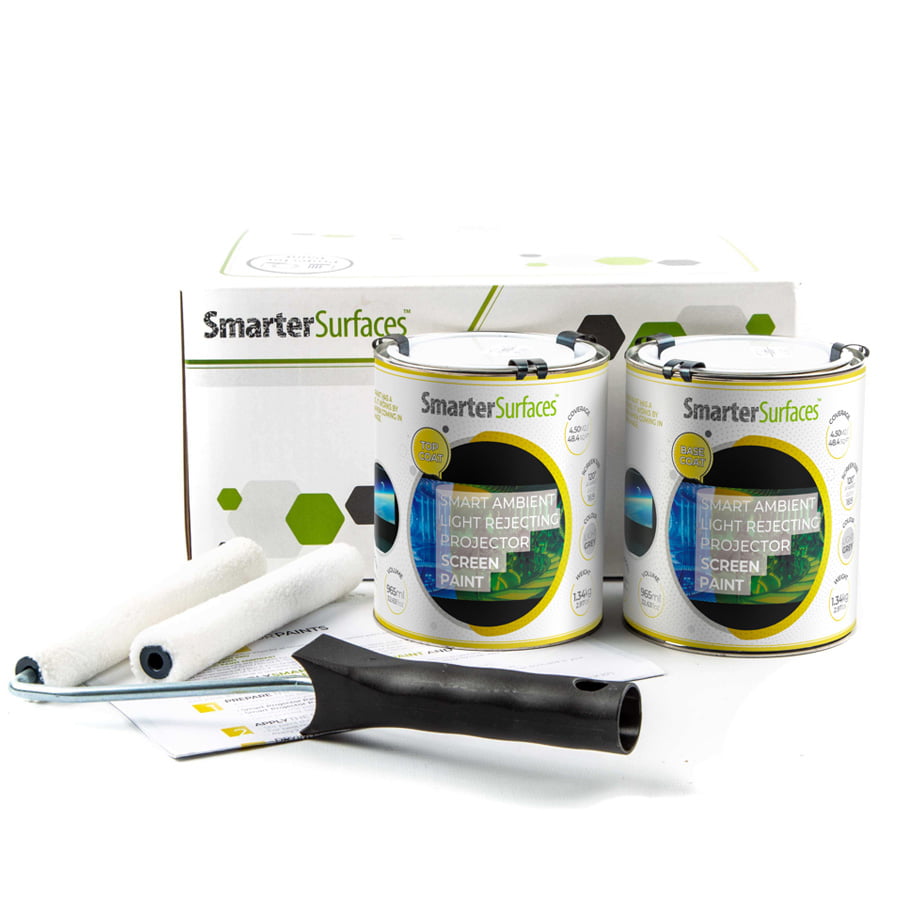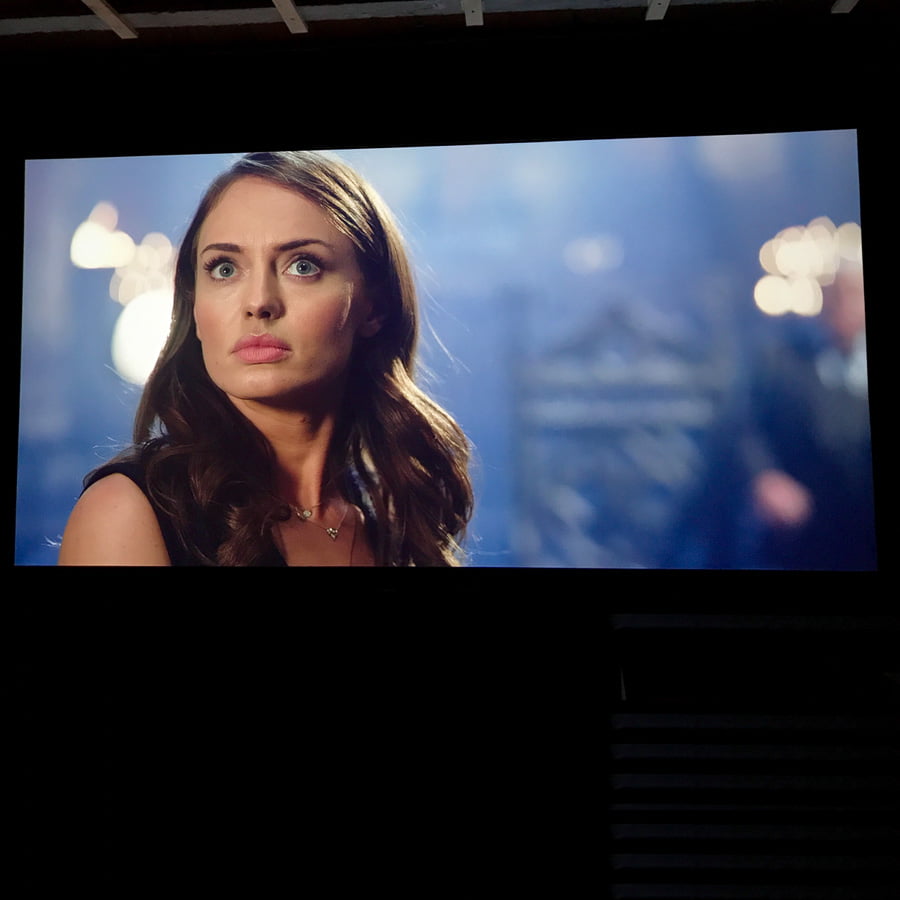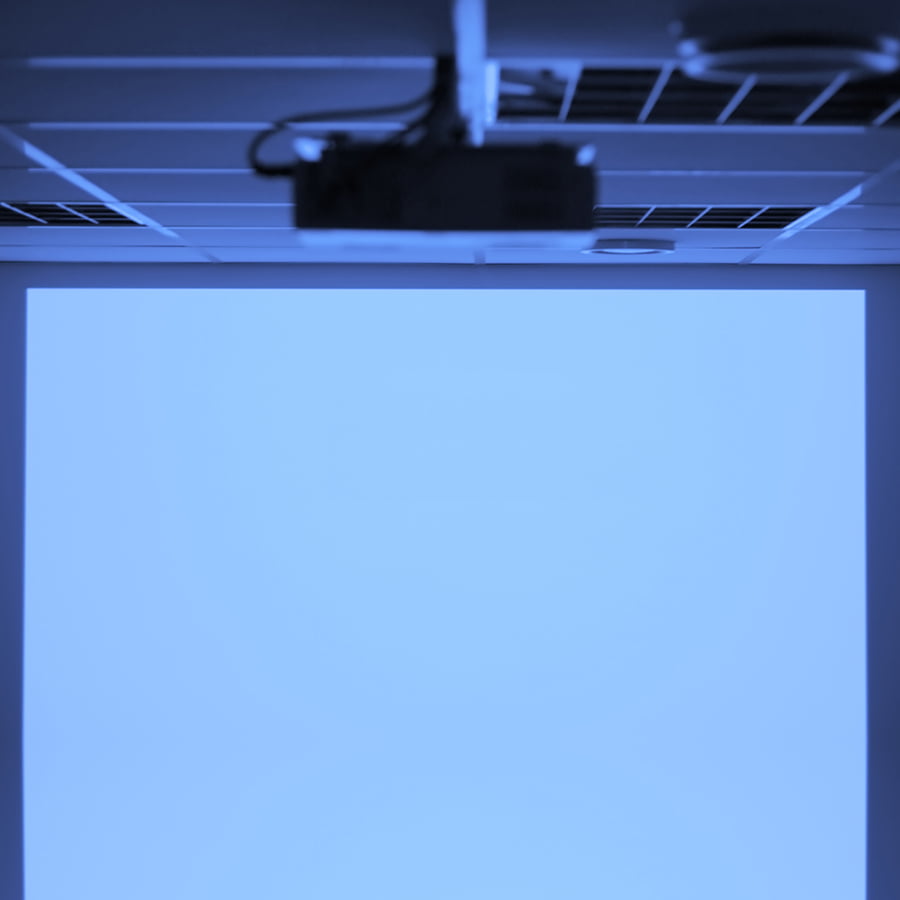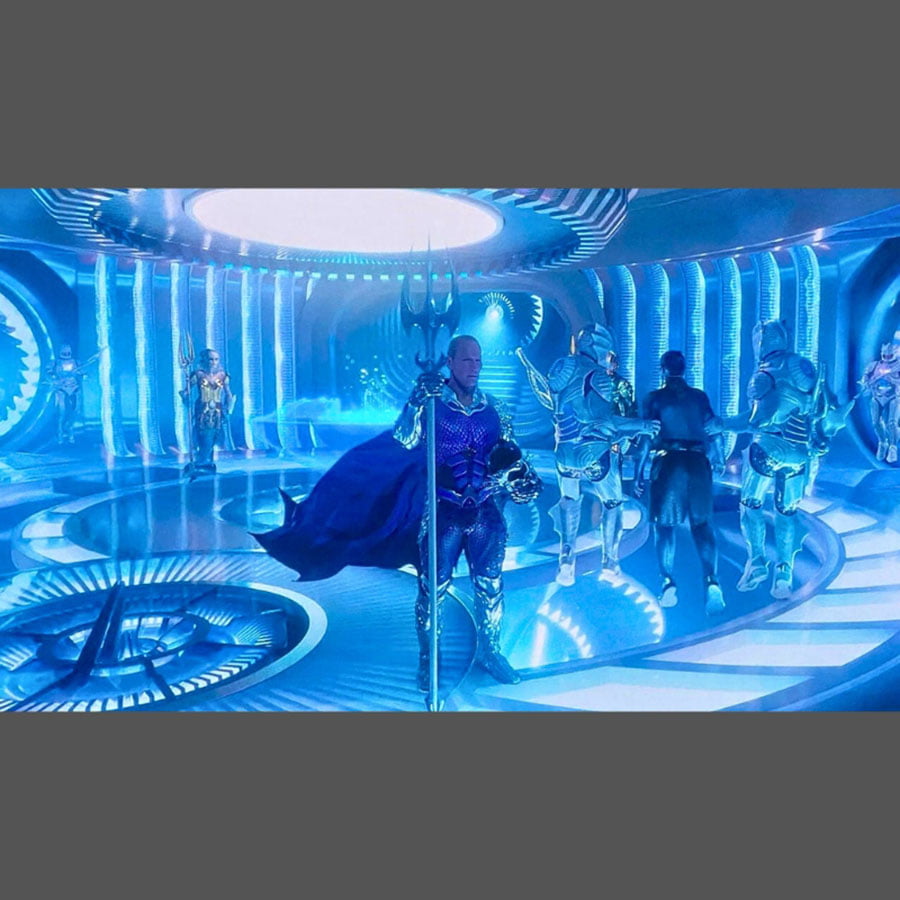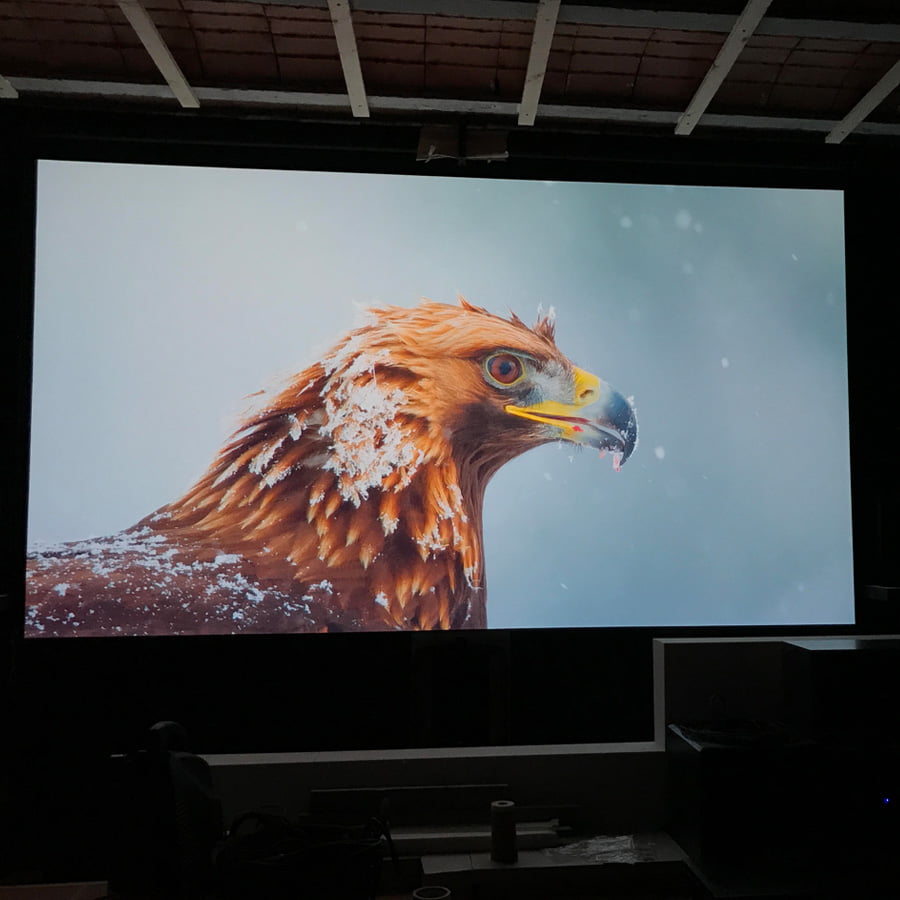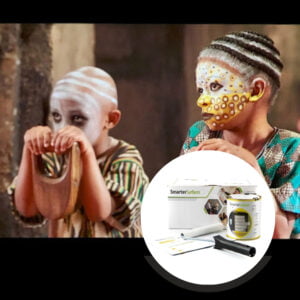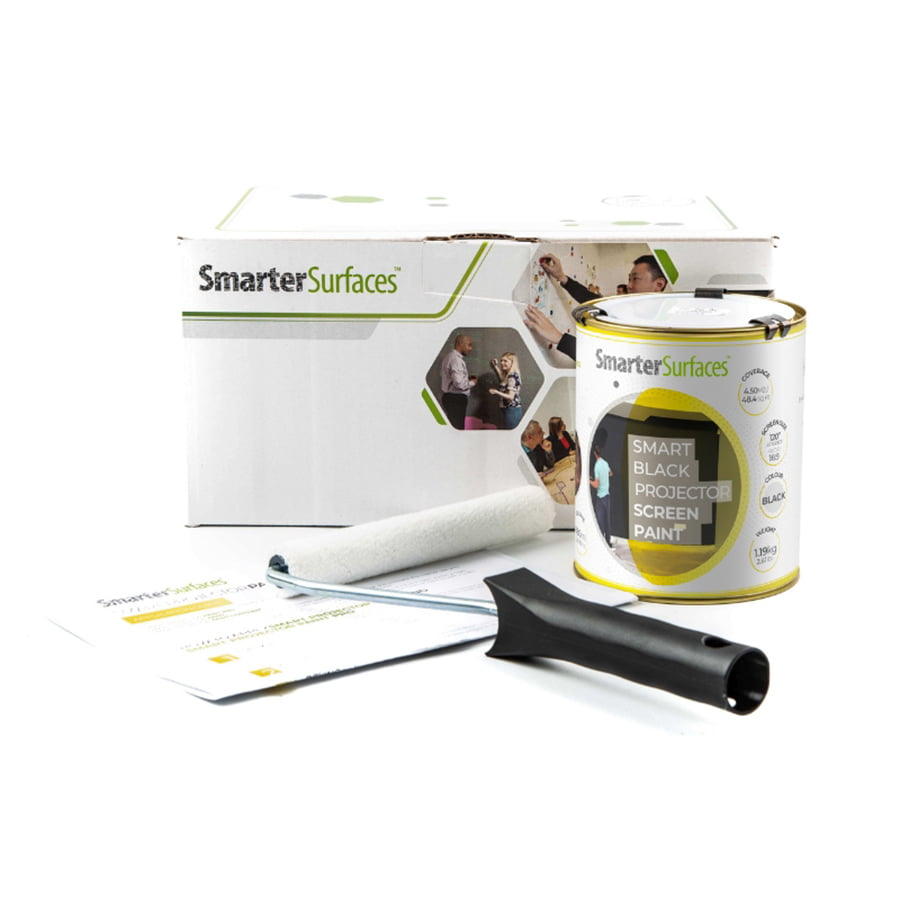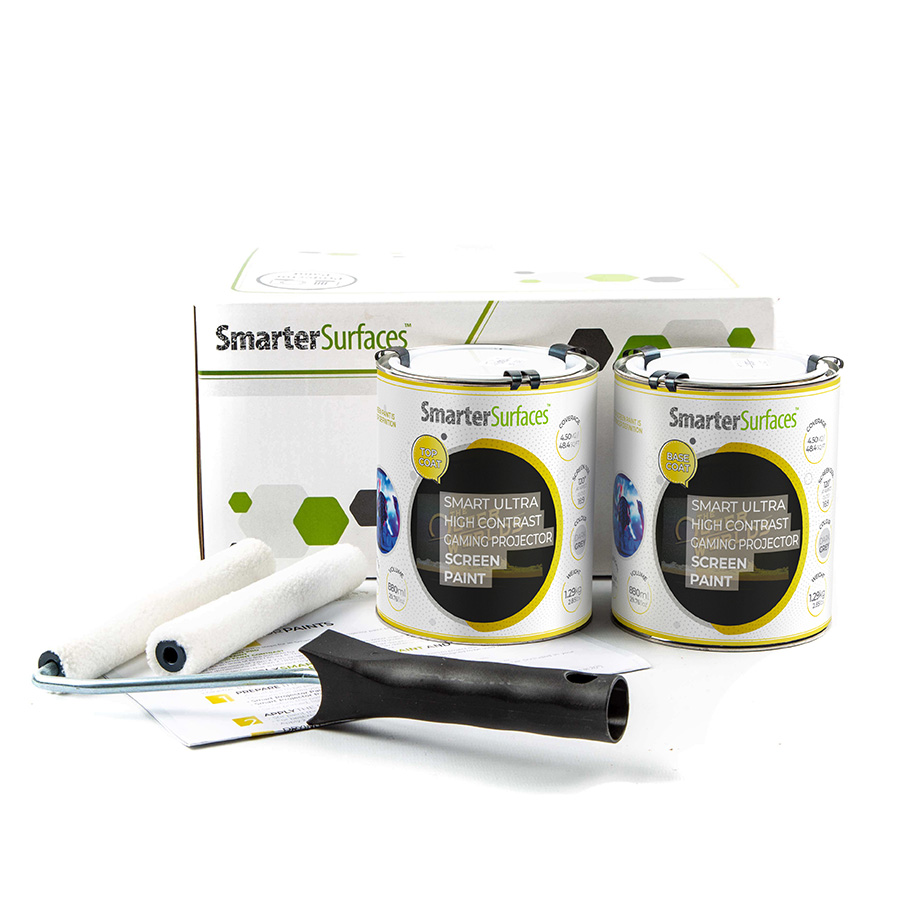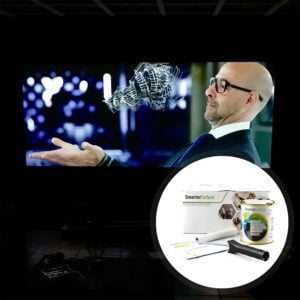Benefits of Using Smart Ambient Light Rejecting Paint (ALR Screen)
Advanced Ambient Light Rejection
Smart Ambient Light Rejecting Paint resists unwanted light ingress, selectively reflecting projector light while scattering excess light, enhancing the quality of images in brighter rooms.Enhanced Picture Reproduction
Engineered for exceptional pixel clarity, sharpness, and ambient light rejection, ensuring vibrant, high-definition images for home theaters and gaming setups.Specular & Diffuse Reflection Reduction
Ultra matte layering technology eliminates both specular and diffuse reflection, minimizing stray light and maintaining image integrity.Stunning Visual Clarity
Designed for flawless projection, ensuring consistent brightness and image quality across the entire surfaceSeamless Application & Modern Finish
Enjoy a quick, hassle-free application that delivers a sleek, understated look while enhancing projection functionality in home theaters.For Use With
- Projector Requirements: Interactive, HD, 4K, Standard Projectors
- Minimum Recommended Lumen Value: 2,000 Lumens
- Lighting: works in most rooms with normal to high ambient light
- Compatible Surfaces: can be applied to fabrics and is suitable for painting or refurbishing old screens, but not suitable for roll-up screens
Performance
- 4K & 8K Ultra HD Ready
- Gain Value @ 90 °: 0.71
- Viewing Angle: 140 degrees
- Certification: Independent Projection Performance Report – CREST
Comparison Table
Compare the performance and specifications of our full projection range
ALR Screen Paint - Technical Specifications
Colour: Light Grey
Finish: Ultra Matt
Coverage / Screen Size :
- 4.5 m2 : 279 x 157 cm at 16:9 Aspect Ratio
- 25 m2 : 667 x 375 cm at 16:9 Aspect Ratio
Volume:
- 4.5 m2 : 880ml
- 25 m2 : 5l
Environmental (exceeds all EU/Ireland standards): low VOC, Solvent free, PFOA & PFOS free and Isocyanates free
Odour: Very Low
VOC: Less than 0.33%
Certification: Independent Projection Performance Report – CREST, Gypsum Surface Finish Quality Standard of EU Level Q4
Stuck on choosing the perfect product? Well, then let’s clear the confusion. Whether it’s a quick chat, a live demo, or a call with our experts, we are just a click away. Get free technical advice, creative suggestions, and tailored recommendations because the right choice makes all the difference.
Worried about installation? We are your virtual toolkit. From step-by-step guidance to pro tips, we’ll make sure you get it right. No guesswork, no stress, but just expert help whenever you need it.
Ambient Light Rejecting – Kit Contents 4.5 m2
- ALR Screen Paint
- White Primer
- Roller
- Roller Handle
- Application Guide
Ambient Light Rejecting – Kit Contents 25 m2
- ALR Screen Paint
- Application Guide
Ambient Light Rejecting Paint Reviews
MAC AV Solutions
Finco Ltd
East Coast AV
Explore More Products From Smarter Surfaces
- (0 Reviews)
Black Projector Screen Paint
From €209.00 ex.VAT Select options This product has multiple variants. The options may be chosen on the product page - (0 Reviews)
Smart Ultra High Contrast Projector Screen Paint
From €219.00 ex.VAT Select options This product has multiple variants. The options may be chosen on the product page - (0 Reviews)
High Contrast Projector Screen Paint
From €209.00 ex.VAT Select options This product has multiple variants. The options may be chosen on the product page - (0 Reviews)
Clear Projector Screen Paint
From €189.00 ex.VAT Select options This product has multiple variants. The options may be chosen on the product page
FAQ's
A higher gain means more light is reflected, resulting in a brighter image, but with a narrower viewing angle. This makes it ideal for controlled, front-facing viewing setups. A lower gain on the other hand, offers a wider viewing angle, ensuring more uniform brightness across different seating positions, though with slightly reduced overall brightness.
Choosing the right gain essentially depends on factors such as room lighting, projector strength, screen size, and audience arrangement, all of which influence the optimal viewing experience.
A higher gain can enhance brightness but may limit the viewing angle, while a lower gain ensures a more evenly distributed image across wider seating arrangements. Understanding gain helps in selecting the right screen for your specific environment, ensuring the best possible visual experience.
A well-balanced gain ensures the best visual experience for the intended space, so higher gain is not always better. It essentially depends on factors such as room lighting, seating arrangement, and projector brightness.
Key factors to consider include:
1. Ambient lighting : Brighter rooms may benefit from a higher gain, while darker spaces work well with lower gain.
2. Projector specifications : A powerful projector may not require a high-gain screen.
3. Viewing angle : Higher gain screens focus brightness in a narrower field, while lower gain screens distribute it more evenly.
4. Distance from the screen : The farther the projector, the more impact gain has on brightness.
So by assessing these elements, you can select a gain that ensures the best image quality for your space.
• They enhance image brightness, thus making visuals clearer and more visible in well-lit spaces.
• They improve visibility in darker settings by amplifying projected light.
• They minimise light reflection from surrounding walls and ceilings, maintaining image clarity.
• They effectively reject ambient light, making them a strong alternative to fabric screens that struggle with general lighting interference.
• They have a narrower viewing angle, meaning viewers must sit more centrally for the best experience.
• Those seated off-centre may experience uneven brightness or diminished image quality.
• They are less suitable for larger audiences, as the restricted viewing angle limits visibility for those seated at the sides.
• High-gain screens are generally not ideal for outdoor use, where a wider viewing angle may be required.
• They offer a wider viewing angle, ensuring a clear image for viewers seated at various positions.
• They distribute light more evenly across the screen, maintaining consistent brightness from different angles.
• They help reduce projector brightness for comfortable indoor viewing, preventing glare or overly harsh visuals.
• They are not ideal for outdoor use, as their lower brightness may struggle against ambient light.
• Some projector light may be absorbed rather than reflected, reducing overall image intensity.
• They may not provide sufficient contrast, making it harder to distinguish fine details in certain conditions.
Blending projections requires :
• Precise colour accuracy for seamless transitions. • Uniform brightness to maintain a cohesive display. • Superior light diffusion to eliminate harsh edges between projected images.Our ALR screen paint is formulated to deliver all these qualities, ensuring a smooth, immersive projection experience. It also eliminates the need for bulky and expensive physical screens, providing a flexible and cost-effective solution for large-scale displays.
When used with a 3D projector, our screen paint enhances the depth and clarity of the projected image, thus ensuring a truly immersive experience when viewed with 3D glasses.
It's therefore really important that the projection screen you use does not change the polarity of the light if you are using a 3D projector. All of our paint products are "polarity preserving" which means that the image you see will be exactly the same polarity as is intended, preserving the full 3D effect.
Maintaining sound quality is just as important as achieving a sharp, high-contrast image. That’s why our Smart Projection Paints are specially formulated to be acoustically transparent, thus ensuring they won’t interfere with your audio experience.
So to determine if our paints affect sound absorption, we conducted a range of rigorous tests using the Sound Absorption Coefficient (SAC), which measures how much sound energy a material absorbs when waves pass through it. Our study focused on 12mm gypsum board, a common building material used for walls and ceilings.
Since sound absorption varies with frequency, SAC values are presented as a range. Our test results showed:
Unpainted Board: SAC (α) = 0.04 - 0.07 Painted Board: SAC (α) = 0.04 - 0.07The fact that our painted board maintains the exact same SAC range as the unpainted board proves that our projection paints do not affect sound absorption. This ensures that audio quality remains untouched, making them ideal for home theatres, auditoriums, and any setup where both visuals and sound matter.
With Smart Projection Paints, you get the best of both worlds, that is a high-performance projection surface without compromising acoustic clarity.
Prepare the Surface :
• Ensure that the surface is clean, dry, and free from loose materials. • Measure the area you wish to paint and mark it clearly with masking tape unless painting a full wall. • If the surface is bare or untreated, apply one coat of Smart White Primer before painting. • Fill any cracks or imperfections and sand the surface smooth using 120-grade sandpaper or similar.Application :
• Thoroughly stir the paint before use. • For obtaining the best results, apply with a mohair or lint-free short pile roller sleeve.
Ambient Light Rejecting Paint Installation
Transform your space into a high-performance projection area with Smart Ambient Light Rejecting Projector Screen Paint. Designed for interior use, this innovative paint is compatible with various materials such as metal, plaster, wallboards, wood, concrete, and composites. This ensures exceptional image clarity even in bright environments.
Surface Preparation
For the best results, start with a clean, dry, and smooth surface free from dust or loose materials. Use masking tape to define the area you wish to paint, ensuring precise application.
Priming & Painting
- Bare or untreated surfaces should be primed with one coat of Smart White Primer.
- Once primed, lightly sand the surface to create an ultra-smooth base.
- Stir the paint thoroughly before use.
- Apply the first coat using a mohair or lint-free short pile roller sleeve.
- Allow to dry completely before applying the second coat.
Drying & Usage
After 24 hours, your Smart Ambient Light Rejecting Paint is fully cured and ready for use, delivering vivid, high-contrast projection even in well-lit spaces.
Try Before You Buy
Want to experience the performance first? Request a sample pack and see the difference for yourself.
Need Assistance?
Our team is here to help. If you have any questions or need expert advice, then please don’t hesitate to get in touch. We are committed to providing outstanding customer support at every step until the success of your project.
![]() A full application guide to help you apply our Ambient Light Rejecting Paint.
A full application guide to help you apply our Ambient Light Rejecting Paint.
Ambient Light Rejecting Paint installation Video
Watch our step-by-step Video Application Guide
Ambient Light Rejecting Paint Videos
Watch our step-by-step Video Application Guide
Whiteboard Paint White for Education
Whiteboard Paint White Case Study


